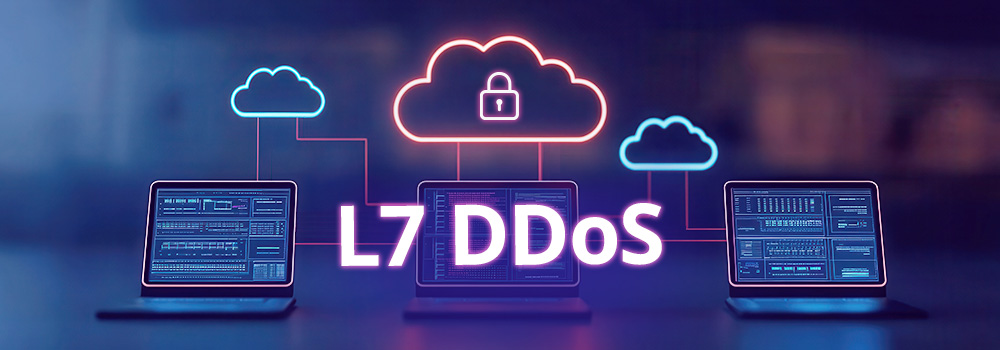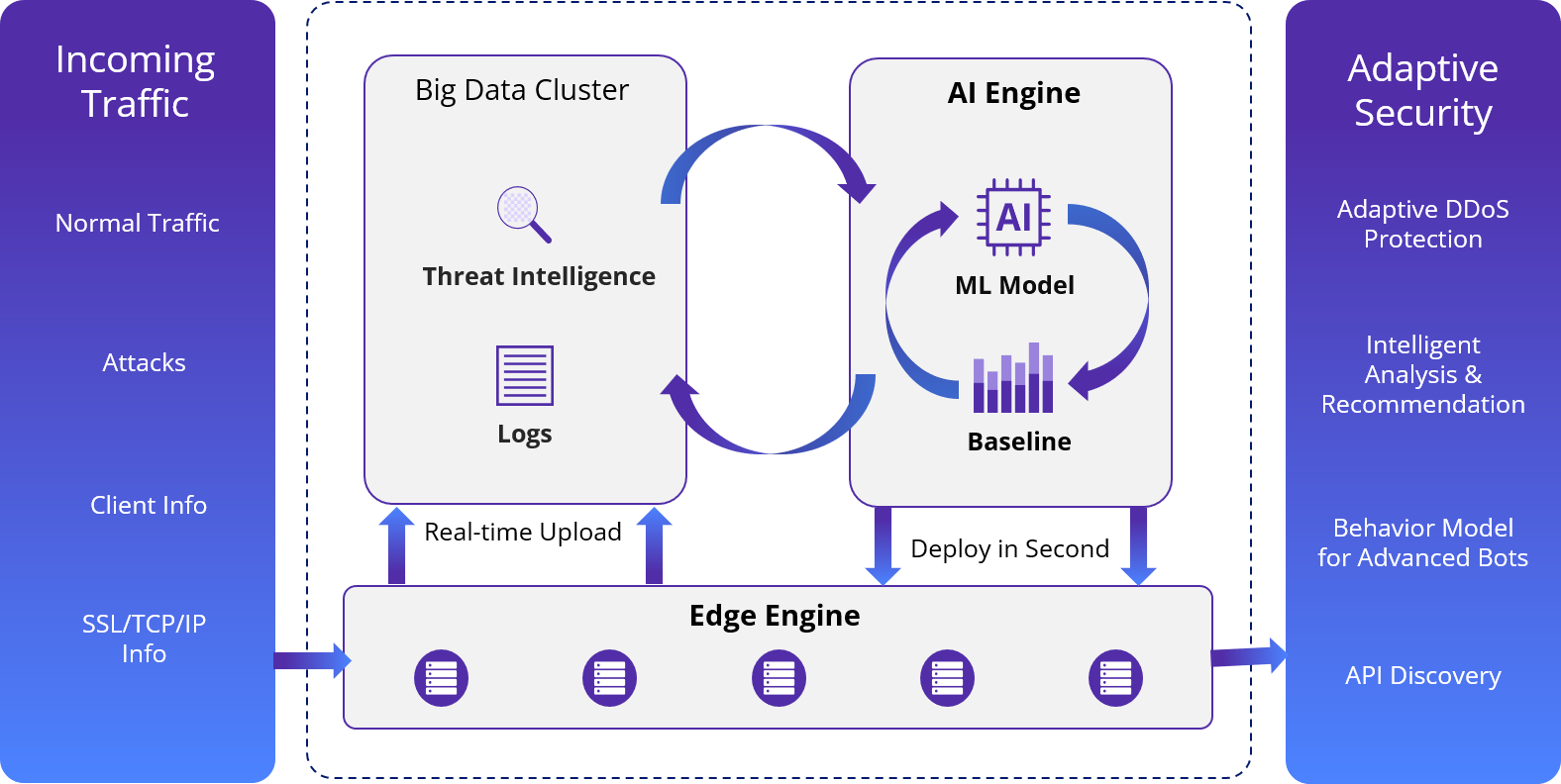Try CDNetworks
For Free
Most of our products have a 14 day free trial. No credit card needed.

Distributed Denial of Service (DDoS) attacks remain a persistent threat, but attackers have dramatically evolved the way they execute these attacks. Automation, especially through accessible AI automation tools, has significantly lowered the technical barrier to launching them. What once required extensive infrastructure now takes only a few lines of script and minimal time to execute.
In this shifting threat landscape, application layer DDoS (also known as Layer 7 DDoS or L7 DDoS) attacks pose particular challenges.
Unlike volumetric DDoS attacks that trigger obvious spikes in traffic, Layer 7 DDoS exploits the logic of the application itself. Attackers mimic real user behavior, spread traffic across multiple IP addresses, and throttle HTTP requests, staying under the radar while steadily degrading performance.
Modern application architectures only deepen this challenge. The widespread use of APIs, microservices, and third-party integrations increases the number of potential entry points, creating a broader attack surface and reducing visibility for security teams. This makes it easier for attackers to target the application layer directly.
Traditional Web Application Firewalls (WAFs) and basic DDoS protection solutions weren’t built to handle the behavioral complexity of today’s application-layer threats. These systems still rely heavily on pattern matching or static rules — approaches that break down when malicious traffic appears indistinguishable from normal use.
This creates a frustrating trade-off for defenders: tuning thresholds too tightly can block legitimate users and hurt usability, while being too permissive allows low-and-slow attacks to pass undetected. The lack of reliable signals puts teams in a reactive posture, constantly chasing isolated anomalies rather than addressing the underlying behavioral patterns.
Without context-aware detection and DDoS mitigation, it’s difficult for organizations to effectively counter the increasingly sophisticated attack types.
To close these gaps, CDNetworks Cloud Security 2.0 leverages an advanced AI engine to deliver adaptive, intelligence-driven protection against sophisticated application-layer DDoS attacks. It’s built on three core capabilities:
Powered by advanced Machine Learning (ML) algorithms, CDNetworks Cloud Security 2.0 continuously profiles legitimate user behaviors and traffic patterns to establish a dynamic, adaptive baseline. Incoming traffic is evaluated against this baseline to detect subtle anomalies that may indicate malicious activity.

The Dual-Engine Infrastructure of CDNetworks’ Cloud Security 2.0 Platform
The advantage of this method lies in its precision and agility: automated detection reduces false positives and accelerates threat identification, enabling faster and more effective incident response compared with the traditional defense system.
Consequently, organizations can maintain uninterrupted service availability while staying resilient against evolving application-layer DDoS threats, even when attackers aim to overwhelm the targeted web server.
Detection alone is not enough. Effective protection against Layer 7 DDoS attacks requires a layered defense strategy capable of identifying and mitigating threats at multiple touchpoints.
CDNetworks deploys a multi-layered mitigation approach that blends client-side defenses, such as JavaScript and Cookie challenges, with advanced TLS fingerprinting techniques like JA3 and JA4. These enable precise identification of legitimate traffic versus malicious sources. Additional layers, such as rate limiting, IP reputation, and geo-blocking, serve to further limit suspicious activity.
These defenses are implemented at the network edge, enabling in-path mitigation that intercepts and blocks malicious requests as close to their source as possible. This edge-based deployment minimizes latency and avoids the need for traffic rerouting or redirection, ensuring legitimate users experience minimal disruption while effectively mitigating attacks.
To remain effective as threats evolve, CDNetworks Cloud Security 2.0 continuously learns and adapts in real time, requiring no manual intervention.
It collects an average of three billion attack samples daily through its extensive edge infrastructure. This vast database, combined with curated third-party and open-source threat intelligence, fuels a constantly evolving detection engine.
Using machine learning pipelines that perform feature extraction, behavioral correlation, and risk scoring, the platform continuously updates its models to reflect the latest attack patterns. This self-tuning capability allows for proactive identification of emerging and zero-day application-layer attacks, covering the blind spots often missed by static, signature-based systems.
By combining adaptive detection, multi-layered mitigation, and continuous learning, CDNetworks’ AI-powered security platform protects against a broad and rapidly evolving range of Layer 7 DDoS threats, including but not limited to:
This extensive coverage ensures that even sophisticated DDoS attacks targeting modern applications are identified and mitigated before they can disrupt operations.
CDNetworks Cloud Security 2.0 represents a new generation of application-layer DDoS protection — one that adapts intelligently to evolving threats while minimizing operational overhead.
By applying behavioral analysis, it enables faster detection, more accurate threat identification, and significantly fewer false positives.
This ensures uninterrupted business operations even in the face of stealthy and low-and-slow attack scenarios, while supporting a resilient, future-ready security posture.
Layer 7 DDoS attacks are just one aspect of a growing array of sophisticated tactics targeting web infrastructure. Given today’s intricate environments of microservices, APIs, and external integrations, sustaining consistent protection across diverse entry points is a significant challenge.
CDNetworks eliminates these blind spots with a unified Web Application and API Protection (WAAP) suite that integrates DDoS Protection, Web Application Firewall (WAF), Bot Management, and API Security. These core capabilities are powerfully enhanced by an AI engine that continuously analyzes traffic, identifies anomalies, and autonomously adapts to defend against new and evolving threats — ensuring your infrastructure can withstand any type of DDoS attack.
Future-proof your security posture today. Sign up for a free trial to experience intelligent, adaptive defense designed for modern websites and applications.
On December 3, 2025 (EST), a critical security vulnerability was discovered in React Server Components, rated with a CVSS score of 10.0.
We continuously innovate to meet the evolving challenges of WAAP in today’s digital ecosystem. In this post, we’ll explore the key capabilities of the CDNetworks WAAP solution.